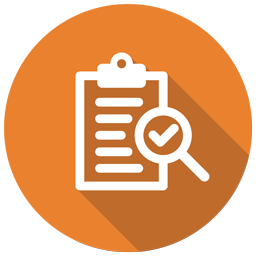When planning your course, it is important to clearly define the course's learning outcomes. It is also important to consider how you will assess whether or not the learning outcomes have been met by your students. The questions you will ask yourself at this step are:
- What do learners need to know when they leave your class?
- How will you know they learned it?
Learning Outcomes
The first question above is asking about learning outcomes. A learning outcomes is a statement that tells students what they should know or be able to do if they complete your course. The following handout will help you understand why learning outcomes are helpful to you and your students, give you a brief guide to writing learning outcomes and show you some examples of learning outcomes.
Learning outcomes work well when they can be measured in some way. A learning outcome that is imprecise, such as "students will appreciate ___" are difficult to assess.
- The Action Verbs for Learning Outcomes list provides a variety of terms that can help you write precise and measurable leaning outcomes for your course.
- After you have an idea about what your learning outcomes will be, you can use the Writing Learning Outcomes Chart to assess how well they fit criteria such as clarity, measurability, attainability and relevance.
Assessing your Students' work
The second question above relates to assessing the work done by students in your course.
Assessment involves setting standards that help you fairly and, to as great a degree possible, objectivly measure whether your students' work satisfies your course's learning outcomes.
- For a guide to assessment, including how to develop a rubric, construct a test and use a portfolio of students' work to develop self-assessment, visit the Authentic Assessment Toolbox, by Jon Mueller, Professor of Psychology, North Central College, Naperville, IL.
There are a variety of levels in which you can assess students.
- For example, "In what year was the country of Canada founded?" is a significantly different level of question as compared to, "Explain whether or not Canada should have been involved in the war in Afghanistan."
These levels of questioning or thinking are categorized by Bloom's Taxonomy. When assessing students you should try to assess students at a variety of levels, and must ensure that you are not assessing students only at the lowest levels of Bloom's (knowledge and comprehension). In order to reach higher levels of Bloom's you may need to use more than pencil-and-paper exams. Here is a resource that shows the verbs that relate to each level as well as suggested activities and assignments Bloom's Taxonomy Staircase.
The can help you construct an assessment plan for your course as a whole, while the can help you plan your assessment items, such as exams, essays and projects, that you will use throughout your course.
For more information about assessment and rubrics, see our assessments page:
Course Design Process
The course design process at Gwenna Moss Centre for Teaching and Learning is made up of the following steps:
